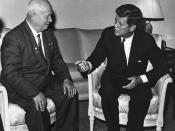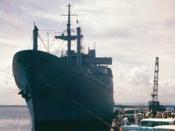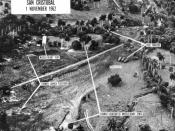Film Study: Thirteen Days
Throughout the film, spy activity and technology occurred regularly. From the start of the film , U2 spy planes were used to locate trucks carrying nuclear weapons in Cuba. Spy activity continued throughout the ordeal, one notable occasion being when spy planes were sent over a Cuban missile base and shot photographs, getting fired upon.
Military chiefs were in great opposition to President John F. Kennedy's rational, peaceful methods, opting to use great force against the Cubans and Russian military occupying Cuba. The military chiefs created a problem by conspiring against President Kennedy's ideas on several occasions throughout the course of the film.
The U.S. had spy planes doing random checks over Cuba and on studying the photos taken by one of the spy planes, what appeared to be 'surface to surface' missiles were discovered. Further investigation found the missiles were medium range ballistic missiles.
The presence of IRBM's and MRBM's within Cuba was a huge threat to America. The missiles could kill 80 million American civilians in 5 minutes and cripple retaliatory methods by hitting U.S. bases. Such a move proves that the Soviet Union were a great threat to the U.S and that they intended to threaten America or attack them.
America had to find a way to remove the missiles. They could use international pressure or an air strike. Either would cripple attempts to resolve the cold war further. A land invasion was an option but the move might be too slow and long-winded to avoid imminent missile attack. Making a deal with the enemy was another option. The consequence of such a move would be that America would appear to be giving in and seem weak in the eyes of it's enemies.
The Kennedies resisted the air-strike option because they didn't...


